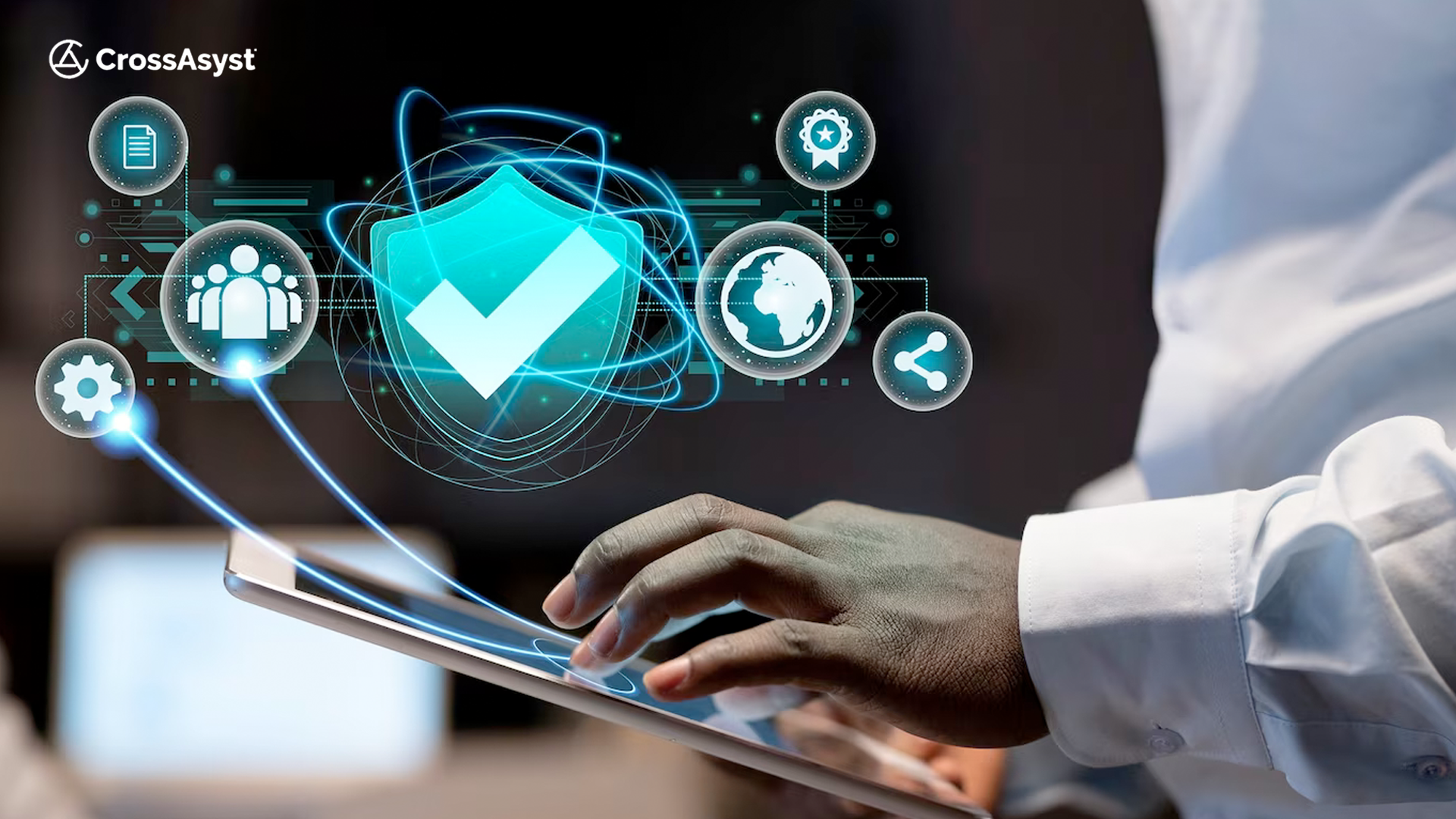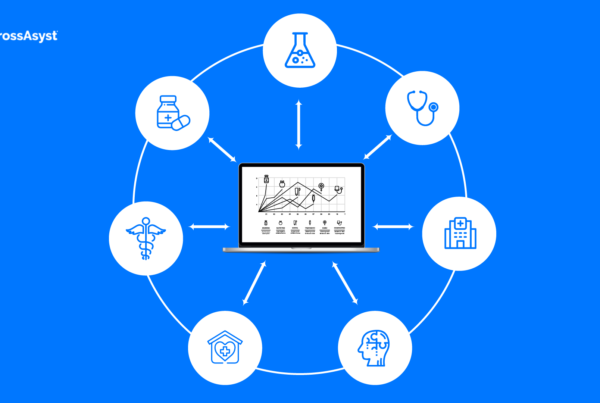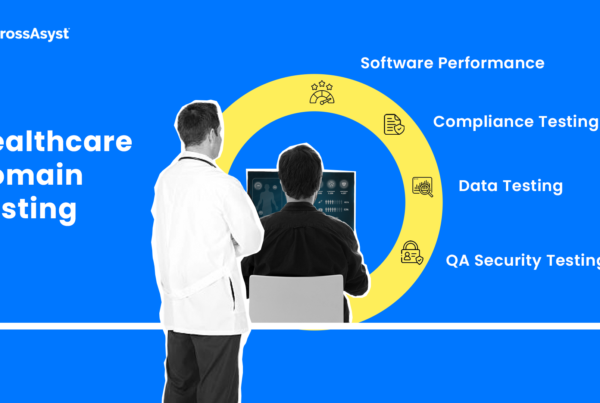
“Technology is a double-edged sword,” quipped famous English musician Martin Gore. This definitely holds true in the case of healthcare data.
Hospitals and other healthcare centers store extremely important data, such as patient details. Traditionally, this data was stored physically, on paper, and was relatively easy to keep safe. However, looking for this data was often tedious, and took considerable manual effort.
The use of technology, on the other hand, has made it easier and faster to retrieve and use this data. However, it also brings with it the risk of servers being hacked and data being compromised.
This is why HIPAA has created a set of ground rules and regulations that are mandatory for healthcare technology to comply with. To give you more of an insight, here’s a quick overview of healthcare data security and its importance.
Table of Contents
An introduction to healthcare data security
While technology makes healthcare data, which includes patient data, medical records and research data, more accessible, it also increases the risk of this data being hacked into and misused.
For example, healthcare research data, if leaked or compromised, can be manipulated to show results more favorable to one drug over others. Data from Veteran Affairs hospitals can be used to commit identity, medical and financial frauds. Fraudulent billing and insurance frauds are also examples of the risks of healthcare data leaks.
The end goal of data security in healthcare is to ensure that this sensitive data is not breached and misused.in any way.
Importance of data security in healthcare
Let’s take a more detailed look at why data security is important in healthcare.
-
Healthcare data is in high demand
Medical data is worth a lot more on the market than regular demographic data is. Healthcare data is also easier for hackers to sell.
-
An increased dependency on technology equals increased risks
With a CAGR of 13.1%, the healthcare technology industry is growing at an unprecedented rate. However, this also increases the risk of data breaches, especially in areas such as healthcare mobility, data storage devices and digital devices.
For example, technology makes it possible for healthcare organizations to employ huge teams that all have access to healthcare data remotely. However, this remote access also makes the data more vulnerable to hacking.
-
Healthcare is a busy industry
Healthcare organizations like hospitals and clinics generally tend to have their hands pretty full all the time. Updating passwords, data backups and other data security practices often take a back seat in terms of priority.
This makes it doubly important for the digital solutions that they use to comply with HIPAA regulations.
Understanding the HIPAA rule
The HIPAA Privacy Rule was established under the Health Insurance Portability and Accountability Act of 1996 (HIPAA) to safeguard the privacy of an individual’s protected health information (PHI). This rule applies to healthcare providers, health plans, and healthcare clearinghouses.
In addition to the HIPAA Privacy Rule, healthcare organizations and their partners also need to adhere to the HIPAA Security Rule, the HIPAA Enforcement Rule and the HIPAA Breach notification rule.
These rules set the benchmark for risk assessments, security measures, risk management measures in case of security breaches and more.
In addition to HIPAA, compliance to other guidelines, such as HITRUST, GDPR and ISO 27001/2799, help healthcare software providers ensure data security.
Healthcare data security risks
Here’s an overview of the most prominent healthcare data security risks in the current scenario.
![Healthcare data security risks]](https://www.crossasyst.com/wp-content/uploads/2023/10/2-300x169.png)
1. Legacy technology
Healthcare organizations often tend to be averse to upgrading their legacy technology, mostly because their staff are accustomed to these tools. From a security perspective, these older technologies are more susceptible to hacking and breaches.
2. Malware
As many as 298 American healthcare facilities were targeted in ransomware attacks, with some hospitals being forced to pay ransoms of over $100 million to remediate the breaches in their security.
The main reason for this is because healthcare professionals are often too busy to check the authenticity of every email they receive, and are liable to click on a malicious email if it looks like it came from a familiar source.
3. Insider threats
Healthcare providers and their partners employ an estimated 14% of all Americans. The risk of data breaches is extremely high when a lot of these people have access to healthcare data.
This is because any of those millions of people could leak that information to outside parties unwittingly, steal it with the purpose of misusing it or even become ransomware victims.
4. Network errors
While wireless access to patient data within a healthcare facility makes treatment a lot more seamless, breaches in security also become easier without adequate wireless network security measures.
5. A lack of strong passwords
While every employee of a healthcare organization may create their own access password, one weak password is all it takes for the data security of the entire organization to be compromised.
6. Unprotected workstations
Something as simple as a healthcare professional leaving a mobile device or their workstation unlocked while going on a break can give those with malicious intent the access they need to commit data frauds.
7. Lack of training
When the staff of healthcare organizations do not have sufficient training in data security processes, they are liable to unwittingly leak data to unscrupulous elements.
Healthcare data security best practices
Now that we’ve discussed what data security risks are most likely to cause breaches in healthcare organizations, let’s dive into some industry best practices in healthcare data security.
1. Update security software
By regularly updating and investing in the latest security software, healthcare organizations can mitigate the risk of data breaches.
2. Control data usage
This is a multifaceted approach. One part of it involves limiting data access to only those who need it and when they need it. Access ought to be granted after verifying credentials using multi-factor authentication.
The second part of it involves curtailing the access to certain data, so that it cannot be uploaded to an email, printed or transferred to an unauthorized device without the necessary permissions and credentials.
The third part involves logging and monitoring the use of all healthcare data. When organizations maintain logs and monitor which of their staff access patient data, it becomes easier to predict, spot and prevent fraudulent behavior.
Monitoring also helps in identifying security gaps and taking preventive measures to bolster data security.
3. Constant education
By educating healthcare staff about the consequences of data breaches and what they can do to prevent these threats to data security. In fact, security awareness training ought to be a repetitive process to ensure healthcare staff always remember to exercise caution while handling PHI.
4. Data encryption
Data encryption of data that is at rest or in transit adds an extra layer of security, making it close to impossible for hackers to use the data even if they somehow access it.
While HIPAA recommends data encryption, it leaves the actual encryption measures and the decision of what data needs to be encrypted to the discretion of the healthcare organization, based on their unique workflows and other factors.
5. Mobile device security
Mobile devices could include everything from smartphones to laptops used for billing, and more. To protect these it’s a good idea to use strong passwords for access, manage device settings and configurations, monitor all data, including emails and attachments from those devices and to encrypt sensitive data.
Other measures include whitelisting what applications can be installed on these devices, constantly educating users about why data security is important, ensuring all mobile devices have mobile security solutions installed and that all users regularly update software as well as operating system versions.
6. Connected devices security
IoT devices are among the newer technologies making their mark on the healthcare industry, and since they all require a network to function as well, they require data protection as well. These devices could range from remote monitoring devices to body cameras.
One of the first measures to ensure data security with connected devices is to host them on their own network. It also helps to have constant monitoring of these devices so that any unnatural spikes in activity can be detected.
It also helps to ensure only necessary applications are enabled on these devices, and to either disable or completely remove non-essential devices. Multi-factor authentication and constantly updating patches are other security measures that help protect IoT devices from being compromised.
7. Regular assessments
Regular penetration testing and risk assessments are a proactive approach to detecting possible gaps in a healthcare organization’s data security. This includes testing the security of the network, testing the security posture of partners and associates, checking on the organization’s training mechanism and more.
Doing periodic assessments helps healthcare providers identify potential risks and plug in the leaks before breaches happen, saving them millions in remediation costs and penalties, while also helping keep their reputations intact.
8. Data backup practices
Everything from hackers and ransomware to natural disasters could compromise the security of patient data. This is why it is prudent that healthcare organizations periodically backup their sensitive data to an offsite location, ensuring that it is readily available in case of any emergencies.
To keep this data even more secure at the offsite location, encryption, limited access and other security measures must also be put in place.
Implement Industry Compliant Data Security With Crossasyst
CrossAsyst has been at the forefront of multiple aspects of custom healthcare software development, including data security, for well over a decade. Here are some of the reasons you ought to partner with CorssAsyst to implement top notch, industry compliant data security measures.
- CrossAsyst’s extensive experience in healthcare IT places us at the forefront of safeguarding sensitive patient information. Our proficiency in healthcare systems such as GE Centricity, Athena Health, NextGen, and more ensures that they fully understand the intricacies of healthcare data management.
- Recognizing the critical importance of compliance, CrossAsyst maintains a HIPAA-compliant team, ensuring that all healthcare data processing adheres to the highest security and privacy standards.
- Our commitment to meeting regulatory and compliance requirements is unwavering. Our teams go above and beyond to ensure that our solutions align with the ever-evolving healthcare regulations, providing our clients with peace of mind.
- The company’s dedication to data security extends to its infrastructure. We at CrossAsyst maintain a secure, access-controlled work environment, employ fully encrypted workstations, and establish physically and logically separate networks for clients who require an additional layer of security.
- CrossAsyst’s robust quality testing and automation services encompass security testing, ensuring that healthcare applications and systems are fortified against vulnerabilities. Our teams follow the OWASP top 10 standards for application development to bolster security.
To find out more about our custom software expertise in general, and data security in particular, contact our team today. We’ll be happy to show you why we are the preferred custom software partner for healthcare organizations of all sizes.





